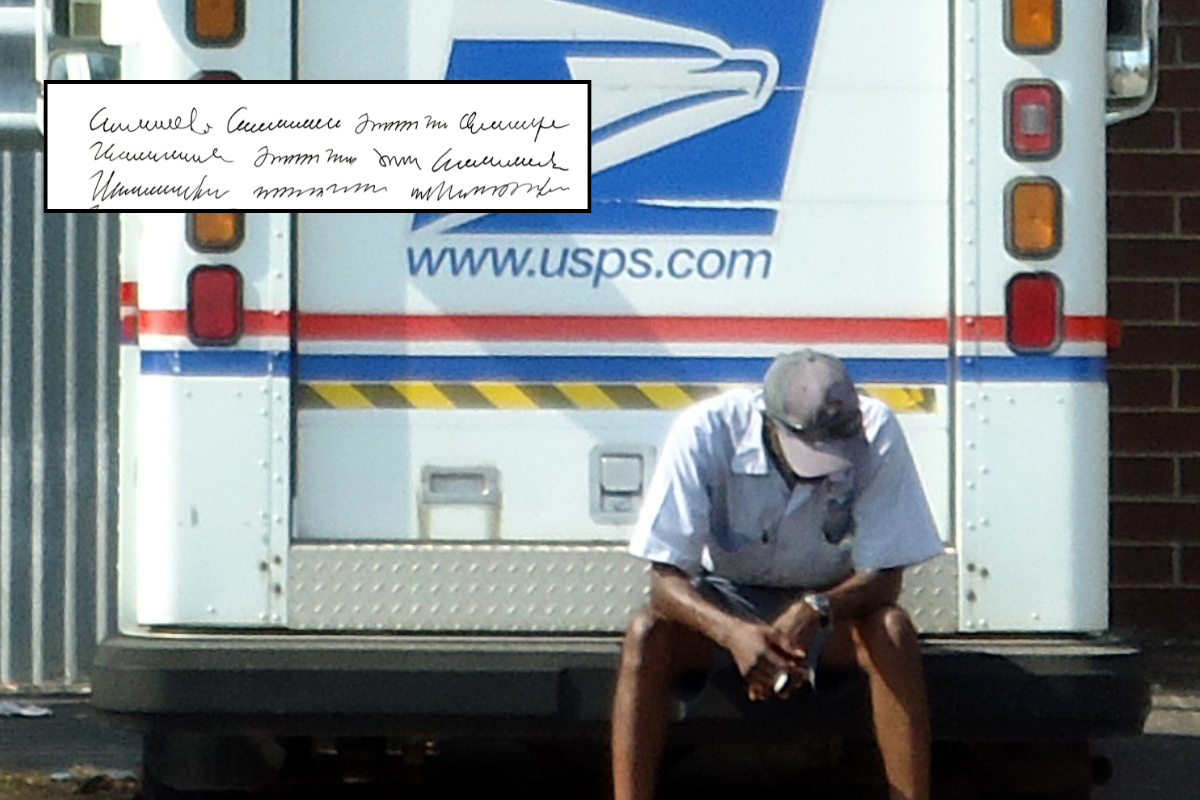Polar bears are stealing booze and candy from humans, and it's really not as funny as it sounds.
Polar bears are largely known as the poster-pets of environmentalism, and it's easy to see why.
They're like giant, adorable, white-but-not-actually-white teddy bears who could just as easily cuddle you as kill you.
Also they've spent the last half-century dwindling near extinction and are still considered threatened under the Endangered Species Act.
The new rap music video from Polar B. GIF via John Downer Productions/YouTube.
And that's exactly why we should be using mass surveillance to keep them safe.
After all, it works with people, right?
"Oh hello there Mr. Spy-Drone-Video-Camera-Thing Disguised as a Giant Snowball, how are you today?" — this polar bear, probably. GIF via John Downer Productions/YouTube.
See? Polar bears love being spied on — just like us!
...Oh wait.
GIF via John Downer Productions/YouTube.
OK, so they might not appreciate the snooping. But we have good reason for keeping tabs on our fuzzy Arctic friends.
According to a new study in the scientific journal PLOS ONE, human-polar bear interactions are on the rise, now that the bears' homes and food sources are melting away.
Or, as they put it in the abstract:
"Polar bears are increasingly using land habitats in some parts of their range, where they have minimal access to their preferred prey, likely in response to loss of their sea ice habitat associated with climatic warming. [...] Projections of continued sea ice loss suggest that polar bears in the Chukchi Sea and other parts of the Arctic may increasingly use land habitats in the future, which has the potential to increase nutritional stress and human-polar bear interactions."
For all we've done to cut down on hunting all across the globe, polar bears must still contend with threats of starvation and a rapidly shrinking habitat — both of which are symptoms of the larger issues of climate change.
As a result, polar bears are wandering from their natural habitats and walking right into our backyards — with alarming frequency.
It's like when an ant shows up and ruins your picnic. Except in this case, that ant can kill you with one swipe of its massive claw.
"Draw me like one of your French girls. Then let me claw your face off." GIF via John Downer Productions/YouTube.
For example, there's the polar bear who stole a steak and wine dinner from a BBC film crew in Norway.
After a long day shooting on location for an episode of David Attenborough's "The Hunt," Sophie Lanfear and her team came home to their rented cabin in Svalbard to find a drunken polar bear passed out on the lawn, having gorged himself on their stash of wine and the 55 pounds of meat they brought along for their trip.
The polar bear returned three more times over the course of two days — but of course, there wasn't any more food for him to eat.
"Huh? What? I'm awake. You guys wanna do shots?" GIF via BBC Earth Unplugged/YouTube.
All kidding aside, the idea of a drunk polar bear stumbling through your home is pretty horrifying, to say the least.
Meanwhile, in Manitoba, Canada, polar bear wrangling is a full-time job.
Authorities actually have to police the streets on Halloween to stop polar bears from beating up little kids and stealing all their candy. There's even a dedicated bear cell at the local precinct house.
"Give us all your Kit-Kat Bars and no one gets hurt." Photo by Payton Chung/Flickr.
(Other polar bears have recently been caught trying on human pants and disco-dancing with a whale carcass, but I'm not including those photos here because they both make me uncomfortable.)
So as much as it pains me to say — maybe spying on polar bears isn't such a bad thing?
That snowball-lookin' drone in the GIFs above was one of five specially-designed spycams created as part of a BBC program called "Polar Bear: A Spy on the Ice" — until the polar bear came along and gleefully crushed it, anyway.
These spycams allow filmmakers and researchers to get up-close-and-personal with polar bears, and gather information on their movements, habits, and behaviors.
As the show's director, John Downer, explains in an interview with Mongabay:
"Some of our small Snowcams were designed to operate autonomously, they would power up and record once a bear came within 20 metre range of it. These could be left for up to one week in the extreme cold. They even contained a satellite phone that would automatically call us on sensing a bear. [...] They were strengthened to withstand the bears' crushing body weight and powerful jaws. Icebergcam was able to follow bears hunting on the sea ice and track alongside them from just a paw swipe away. The close proximity of the cameras provided viewers with an engaging and fresh experience of polar bears that was far removed from the solitary cold killers as they have been traditionally portrayed."
Data collection alone won't help us stop climate change any more than it helps stop terrorism (which is not at all). But if we're not going to pay attention to the damage that we're doing to the planet — and we really should — then we're going to need to figure out how to coexist with our furry new neighbors.
"Do you have a moment to talk about your Lord and Savior — hey wait come back!" GIF via John Downer Productions/YouTube.
But despite their increasingly erratic behavior, things are (mostly) looking up for the polar bear population.
It's hard to get an exact count, but the general consensus is that the polar bear population has at least doubled since its lowest point in the late-1960s. And thanks to those handy polar bear wranglers, no one in Manitoba has been mauled by a bear in more than 30 years. That's a win on both sides, right?
But none of that changes the fact that they're still in danger — and so are we, as long as their homes continue to melt away.
So let's demand that our world leaders take action now to protect our planet's climate, or else we'll have to deal with a lot worse than polar bears drinking all our booze and ruining Halloween.



 TikTok · Ale
TikTok · Ale
 Kittens are the cutest.
Kittens are the cutest.  Grrrr, wook at his widdle paws and his widdle whiskers.
Grrrr, wook at his widdle paws and his widdle whiskers. 

 Design 3D GIF
Design 3D GIF 
 Bluebells at the Brooklyn Botanical Gardens.
Bluebells at the Brooklyn Botanical Gardens. 